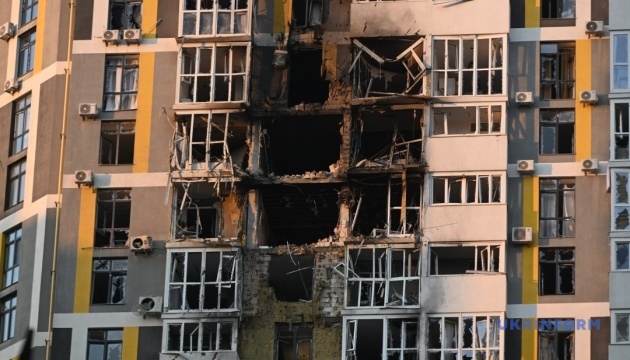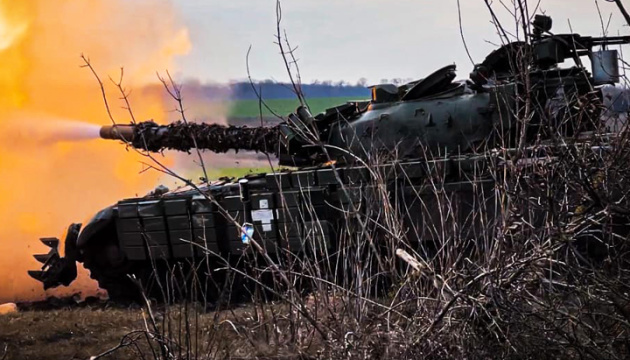PM Svyrydenko reveals level of additional funding for front-line territories in draft 2026 budget



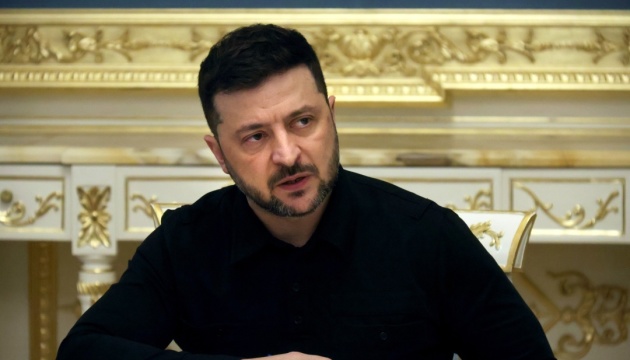



 |
One long-term strategy could stop Russia’s glide bombs—but demands a painful choice. As many as 5,000 Russian glide bombs rain down on Ukraine every month. How can the Ukrainians slow the lethal rain? |
 |
Ukraine’s quick fix for Energoatom scandal may gut critical reforms. How the government responds will determine if this scandal only affects Energoatom or every other state company, destroying years of hard-won reforms. |
 |
Ukraine’s blackouts were avoidable. Energoatom corruption and political vendetta made them inevitable.. The blueprint existed. The funding existed. What happened instead reveals an institutional collapse more damaging than Russian missiles alone. |
2,000+ Russian drones, 150+ missiles hit Ukraine's energy grid as repair workers operate "like ants" between emergencies Rolling blackouts affect multiple regions as workers coordinate rapid repairs on generation sites, transmission lines, and gas infrastructure damaged in the October-November assault.
Ukraine's Long Neptune missile, drones hit Russian oil terminal and air defenses in Novorossiysk Observers tracking open-source footage linked some of the strikes to a military unit housing S-300 or S-400 systems. NASA FIRMS confirmed fires across Novorossiysk.
Ukrainian drone swarm strikes occupied Donetsk, triggering fires and power outages (VIDEO) Residents reported intense anti-aircraft fire as drones circled the city for hours.
Frontline report: Ukraine executes textbook deception maneuver to reinforce embattled Myrnohrad Massive Ukrainian counterattacks along the Dobropillia frontline forced Russian forces to shift from offense to defense, creating a critical window for Ukrainian troops to rotate forces and deliver vital supplies to defenders in Myrnohrad.
ISW: Russia masses nine brigades on a 41‑kilometer strip — Huliaipole axis in Zaporizhzhia Oblast faces major pressure (MAP) Russian forces are pushing deeper toward Zaporizhzhia's Huliaipole and Dnipropetrovsk Oblast's Velykomykhailivka, using airstrikes and bad weather to blind Ukrainian drones.
Ukraine's homegrown 'Octopus' anti-Shahed interceptor drone enters mass production Combat-proven system operates at night, under electronic jamming, and at low altitude to counter conditions that strain standard air defenses.
Ukrainian intelligence derails Trans-Siberian Railway 6,600 km from Ukraine, hits North Korean weapons route (VIDEO) HUR released video showing explosive placement and detonation near Sosnovka in Khabarovsk Krai, disrupting a key corridor for weapons from North Korea.
"Ukraine's security is directly connected to ours" – 8 Nordic-Baltic countries pool $500M weapons package Package includes HIMARS rockets, air defense systems, and precision weapons sourced through NATO's PURL initiative to counter intensifying Russian strikes.
Reuters: US firm Carlyle seeks to buy Russia's Lukoil foreign assets Reuters reveals the US Treasury killed the Swiss trader's bid, paving the way for an American takeover.
Russia trains drone operators by hunting Ukrainians in Kherson streets – Zelenskyy President vows "special solutions" as Russian forces use frontline cities as live-fire training grounds.
Russia launches massive air attack on Kyiv, killing 6 and wounding 36 civilians across the capital—children and pregnant woman among the injured (UPDATED) The Air Force says Moscow launched 430 drones and 19 missiles. More were killed in Odesa Oblast, while damage to power and other infrastructure facilities is reported across several regions.
Read our previous daily review here.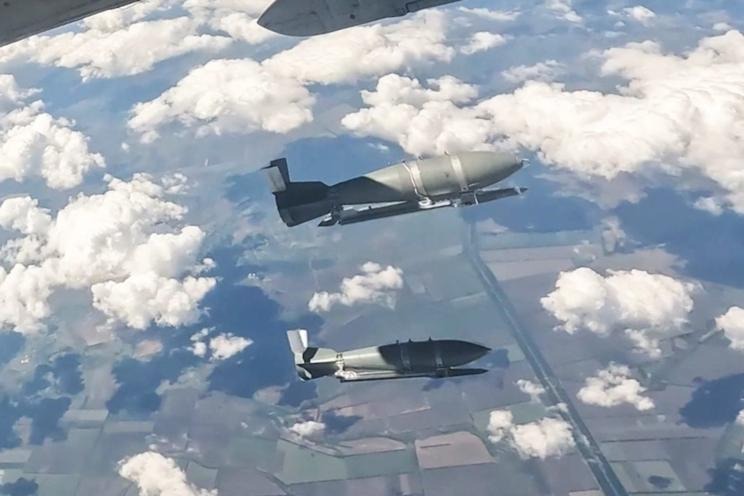

The Russian air force is lobbing as many as 5,000 glide bombs at Ukrainian positions every month, including some bombs weighing 3,000 kg. Just one of those aerial monsters is powerful enough to flatten a high-rise building.
The glide bombs blast holes in Ukrainian defenses, disrupt military logistics, and terrorize everyday Ukrainians living near the front line, leveling entire apartment buildings in one go.
In the battle for Pokrovsk, Russian forces drop up to 450 glide bombs per week on a single sector, destroying fortified strongpoints that Ukrainian forces spent months building—and allowing Russian infiltration. One FAB-3000 bomb can completely obliterate a fortified position, turning Ukrainian defensive networks into rubble and forcing troops into open fields where they become easier targets.
There are measures Ukrainian forces can take to blunt the relentless bombardment—but none are cheap. And some could take months if not years to have any meaningful effect.
Recent footage from the front line in Myrnohrad, in eastern Ukraine's Donetsk Oblast, dramatically illustrates the power of Russia's glide bombs, which range as far as 65 km on pop-out wings and satellite guidance. Russian industry developed the glide bomb kits in early 2023 in response to heavy Russian air force losses during close bombing sorties.
Glide bombs are a truly terrifying weapon. A Ukrainian soldier fighting in Konstantinivka told me about a FAB-3000 (as in, it weighs 3,000kg) hitting a nine-story apartment building next to his position. Leveled it to the ground in one go. https://t.co/SvTqljWqnv
— Neil Hauer (@NeilPHauer) November 13, 2025
The recent footage depicts a 1,500-kg or 3,000-kg glide bomb striking a multi-story building—and demolishing it.
"Glide bombs are a truly terrifying weapon," Canadian journalist Neil Hauer explained. He recalled a story about 3,000-kg glide bombs striking an apartment building in Kostiantynivka, in eastern Ukraine. "Leveled it to the ground in one go," Hauer wrote.
The inexpensive glide bombs, each costing just a few tens of thousands of dollars, dramatically reduce Russian warplanes' exposure to the most dangerous Ukrainian air defenses. Instead of attacking from directly overhead, planes could attack from 40 km (with the first generation of glide bombs) or from 65 km (with a newer generation that debuted this year).

It's no coincidence that, as Russia's hundreds of Sukhoi Su-30 and Su-34 fighter-bombers switched to glide bombing since 2023, the rate of loss for both types has declined. Since Russia widened its war on Ukraine in February 2022, the Russian air force has written off around 15 Su-30s and around 40 Su-34s.
More than 250 of the jets remain in service—and Sukhoi continues to deliver replacement airframes at a rate of a couple of dozen a year.
Ukrainian forces aren't defenseless. They can:
But jamming requires constant adaptation as the Russians add more and more satellite navigation receivers to successive generations of glide bombs. Long-range air defenses are in short supply as the Ukrainian air force prioritizes the defense of major cities and power plants against the most damaging Russian cruise missiles and ballistic missiles.

Disrupting the Russian aerospace industry is a long-term solution to the glide-bomb threat.
Flying nearly daily glide-bombing sorties, the Russian Su-30s and Su-34s have "built up significant fatigue hours" on their metal airframes, analysts Nikolay Staykov and Jack Watling wrote in a new study for the Royal United Services Institute in London. Warplanes are built tough, but they can become unreliable and unsafe after a few thousand flight hours.
More and more Russian jets are reaching that dangerous threshold. The recent crash of an Su-30 may underscore that risk.
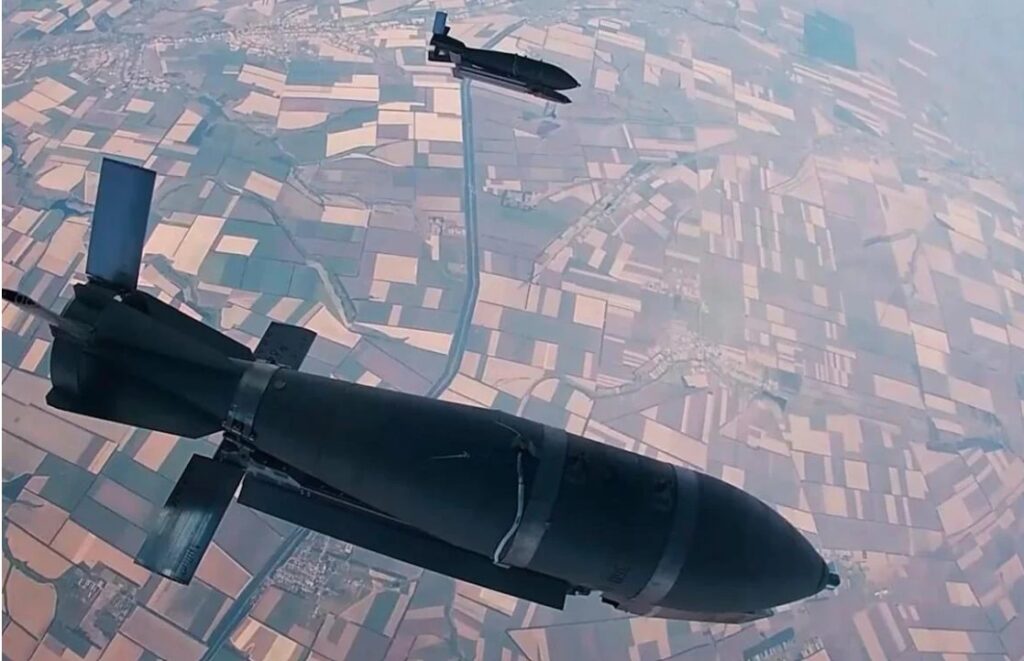
Ukraine and its allies can accelerate the decline of the Russian fighter fleet and slow the pace of glide bombings—by strangling Sukhoi and its suppliers with sanctions, and directly attacking the most critical production facilities with long-range attack drones.
The aerospace industry in Russia is uniquely vulnerable.
"Because of the number of precision subcomponents necessary to assemble fighter aircraft, even minor delays and disruption to production have a significant knock-on impact in suppressing the acceleration of aircraft production," Staykov and Watling wrote.
If Ukraine's allies can close gaps in sanctions on Russia's aerospace industry to cover all tiers of suppliers and, equally importantly, properly enforce the sanctions, it could "reduce the threat" from the Kremlin's glide bombers by reducing the number of flyable planes.
It wouldn't happen quickly, of course. It could take years before fatigue grounds a significant portion of the Su-30 and Su-34 fleet. Drone strikes on the factories could speed up the degradation by driving the production rate of new jets closer to zero.

But an intensive effort to drone Russian aerospace plants might have the unintended consequence of taking the pressure off the oil industry—and boosting Russia's wider economy.
At present, Kyiv aims most of its long-range drones at Russia's oil industry. The oil campaign has disabled 20% of Russia's oil refining, forced a VAT hike, and driven Moscow's National Wealth Fund toward exhaustion by 2026—"the most efficient thing Ukraine can do" to hurt Russia's war machine, as one economist says.
But every drone aimed at an oil refinery is a drone not aimed at aircraft factories building the bombers that drop 5,000 glide bombs monthly. Pivoting to strikes on airplane factories focus might reduce bombardment in two or three years, if it works. Every month of delay means 5,000 more bombs.


Russian forces are using civilians in Kherson and other frontline cities as live targets to train drone operators, Ukrainian President Volodymyr Zelenskyy said on 15 November, referring to the systematic killings of Russia’s "human safari" terror tactic.
The attacks serve a dual purpose for Russia: terrorizing Ukrainian civilians who resist their forces while providing real-world training for drone operators, transforming Kherson and other cities into live-fire training grounds.
"They are essentially conducting a 'human safari' and training drone operators through the killing of Ukrainians on the streets, on the roads," Zelenskyy said in his evening address. "We need more protection and more of our own active operations."
The president singled out Russian units targeting Kherson, Nikopol, and other cities within easy reach of occupied territory.
"They are tormenting our cities, tormenting our people," he said. "We are preparing special solutions that can strengthen our defenses, particularly in those regions and inflict greater losses on the occupier - especially on those Russian units" conducting the attacks.
Since summer 2024, Russian forces have conducted what Kherson residents call "human safari" - using small FPV drones equipped with cameras to track individual pedestrians, cyclists, and drivers, then drop explosives directly on them.
The UN confirmed in October 2025 that these attacks constitute crimes against humanity. Russian forces deliberately target civilians, ambulances, and first responders across over 300 kilometers of territory along the Dnipro River.
Kherson experiences thousands of drone strikes monthly, with Russian military social media channels openly posting videos of the attacks and referring to them as a "hunt."
Russia has already killed 2877 Kherson civilians in its drone safari. And the ticker is rising each day.
— Euromaidan Press (@EuromaidanPress) October 25, 2025
Each of the dots is a geoconfirmed, prooflinked case of deliberate Russian murder against old ladies, children, and first responders in Khersonhttps://t.co/vH43rDMjeV pic.twitter.com/XCpTWdUffz
Zelenskyy announced expanded deployment of Ukraine's Unmanned Systems Forces, including the elite Magyar's Birds unit, with additional resources allocated to counter the threat.
Starting 1 December, Ukraine will launch an electronic points system for evacuating wounded soldiers using ground robotic complexes. "We are also fully ensuring direct financing for brigades for their needs - for drones, for procuring components," the president said.
The announcement came after Zelenskyy's recent visit to Kherson, where he met with military leaders and drone units to review defense measures for the city three years after its liberation from Russian occupation.
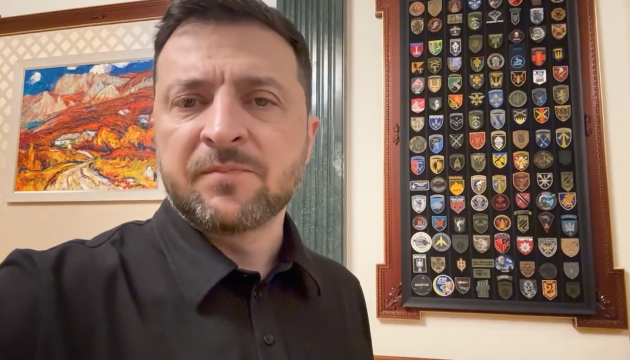





Ukraine's energy ministry reported that Russia fired more than 150 missiles and over 2,000 drones at the country's power system during October and early November.
As winter approaches, Russia has intensified attacks on Ukraine's energy infrastructure, mirroring tactics from previous years aimed at causing blackouts and disrupting daily life. The strikes focus on critical nodes in the grid, aiming to strain repair crews and threaten civilian safety.
The ministry said that Russia targeted power generation sites, transmission lines, distribution networks, and gas infrastructure.
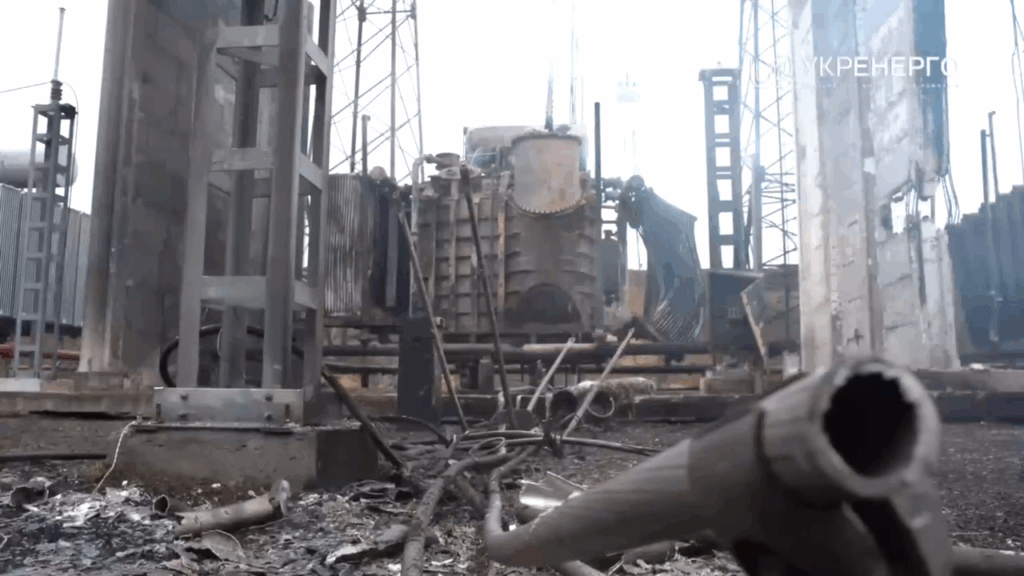
The October-November assault represents Russia's fourth consecutive winter targeting Ukraine's power system.
Among the major strikes: on 8 November, Russian forces launched over 450 drones and 45 missiles, forcing all three Centrenergo thermal plants offline and leaving Kyiv residents without electricity for up to 12 hours.
Strikes on 2 November plunged the entire Ukraine-controlled part of Donetsk Oblast into a full blackout, while other attacks have killed energy workers using double-strike tactics - hitting infrastructure sites, then attacking again as repair workers arrive.
Earlier strikes in October destroyed 60% of Ukraine's gas production capacity, forcing Ukraine to import gas at emergency winter prices and spend nearly €2 billion to maintain heating for 12 million Ukrainians.

The ministry expressed gratitude to energy workers and highlighted newly installed anti-drone shelters at key facilities and international support in limiting damage.
Yet, Ukraine continues to experience severe rolling blackouts across the country. Some regions face power cuts for up to 12 hours daily as Russian strikes outpace repair work.
Energy workers operate around the clock under dangerous conditions, racing to prevent complete grid collapse.
"Compared to the first attacks in 2022, we're now like ants: we run in, everyone takes their task," said Oleh, a master technician repairing transformer equipment, in a ministry video.

The workers' coordination has improved dramatically since 2022. But improved efficiency can't overcome the math: when Russia fires 2,000 drones and 150 missiles in six weeks, repair crews struggle to keep pace.
"It often happens: we just got home and immediately need to leave again to fix an emergency," added Ivan, head of the overhead line repair section at the facility featured in the video.
The accumulated experience from years of war allows crews to work faster, but the exhaustion is mounting, the blackouts continue, and winter has not even begun.


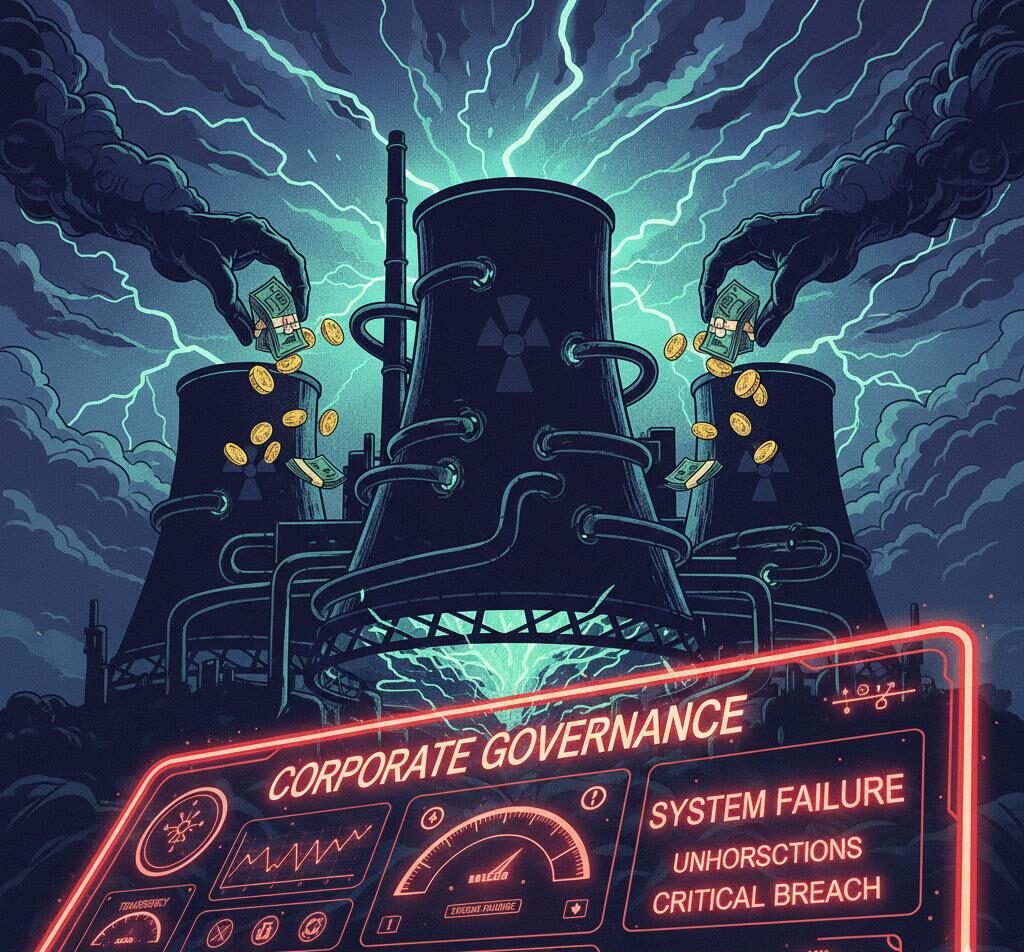

Operation Midas revealed a systemic management failure at Energoatom, one of Ukraine’s largest state companies. But things can get much, much worse.
How the government responds will determine if this scandal only affects the nuclear operator, or every other state company, destroying years of hard-won reforms that tried to lift Ukraine out of its Soviet past. For now, the government is not off to a great start.
Prime Minister Yuliia Svyrydenko announced three decisions after news of the corruption scandal broke:
However, it later emerged that another decision was adopted on the same day, without being announced — effectively nullifying independent performance evaluation for supervisory boards of all strategic state-owned enterprises (SOEs), not just Energoatom.
These steps, in combination, raise serious concerns that a reform rollback is possible. If that happens, it can lead to more political meddling at SOEs, paving the way for a new wave of systemic scandals in the future.
This can weaken the greatest pillars of Ukraine’s economy during a time of war, compromise the country’s future recovery, erode its integration into the EU, and make it more like Russia, something that thousands of volunteers fought tooth and nail to prevent.
Energoatom runs the nuclear plants and is responsible for more than half of the country’s power generation.
Like other strategic SOEs, Energoatom went through corporate governance reform in 2023 and 2024, to establish efficiency and transparency. Part of this reform involved creating a supervisory board — the first one Energoatom had in history.
This was supposed to break Ukraine's Soviet legacy of state enterprises where ministers acted as owner, manager, and controller simultaneously — a system where only 15% of Ukraine's 3,100 state enterprises turned a profit, while the rest accumulated $16.7 billion in debt between 2018 and 2023.
The 2024 reform, a prerequisite for EU membership and IMF funding, aimed to replace political appointments and extraction schemes with independent boards selected through transparent competition. It was meant to finally complete what reformers started in 2014.
For Energoatom, proving Ukraine could manage strategic assets to OECD standards is essential for attracting the billions in reconstruction investment the country desperately needs.
In theory, the system should work as follows: the state sets strategic goals and appoints a supervisory board to ensure their implementation. The board hires and oversees management. The state then evaluates whether the board has fulfilled its mandate.
In practice, however, the board’s independence was compromised from the start.
Despite official statements denying political interference, real events suggested otherwise. A six-month delay in signing contracts with newly elected board members — which prevented the board from starting its work — led to the resignation of independent member Timothy Stone.
As a result, the supervisory board never obtained the legally required majority of independent members. And it subsequently failed in its responsibilities:
Members of supervisory boards at SOEs must fully understand their fiduciary duties.
If a board cannot explain what it has done over the past year to prevent or detect corruption schemes in a company long associated with scandals — and provides only vague general statements — this indicates a lack of due care.
As such, the Ministry of Economy’s position that the supervisory board “was not involved” in the actions under investigation seems unclear. While board members were not beneficiaries or perpetrators of the corrupt schemes, their core responsibility was precisely to ensure such schemes could not occur.
Even more contradictory is the Ministry’s claim that this board “helped establish modern corporate governance processes.” If large-scale corruption was allowed to flourish, it is difficult to describe the system as modern or effective.
A comparison with the banking sector is instructive: managers and board members whose banks collapse lose their impeccable business reputation and are barred from similar positions. At Energoatom, however, the board under whose watch corruption thrived was essentially thanked for “building modern corporate governance.”
One of the government’s first reactions to the scandal was to prematurely terminate the powers of this board.
At first glance, this may seem logical: the board is the key element of the corporate governance system and is accountable to the state as the owner.
However, the way the government went about it — firing from the hip while ignoring legal procedures —may suggest that it’s more interested in sweeping the problem under the rug than solving it.
The Law On the Management of State Property Objects contains an exhaustive list of grounds for early dismissal of supervisory board members.
Nothing on that list says you can fire the board based on a subjective assessment of ineffectiveness.
The decision must rely on a formalized performance evaluation. Since no proper evaluation was conducted, the government likely lacked legal grounds for the dismissal.
Even the government’s amendments adopted on 11 November, allowing evaluations to be conducted solely by Energoatom’s owner (the Cabinet of Ministers through the Ministry of Economy) — without independent consultants — do not eliminate the requirement to actually perform the evaluation.
Under the legally-mandated procedure:
None of this could reasonably have been completed in a single day. The absence of a published evaluation report, which is explicitly required by law, further indicates that the evaluation did not take place.
If this violation of a core reform safeguard is ignored, protection of SOE supervisory boards from political interference will collapse. If Energoatom’s board can be dismissed in this manner, any SOE board could be dismissed next, regardless of objective justification.
The Ministry of Economy stated that, in coordination with G7 partners, it would propose a new board composition within a week.
However, the procedures established by law and Cabinet resolutions 142, 143, and 777 require:
This process typically takes at least three months. Completing it in seven days is not realistic under current rules.
Some stages may be accelerated in exceptional circumstances, but bypassing transparency and competition is not flexibility — it is regression. Transparent, merit-based selection is a cornerstone of sound corporate governance. Any informal or opaque approach will further erode trust.
The inconsistency is striking: the government can amend resolutions overnight when it seeks to weaken transparency (as with the evaluation procedure), yet has failed for months to approve reforms aimed at strengthening selection rules — despite these being legal obligations and long-overdue IMF benchmarks.
This explains why official claims of “commitment to reform” now face skepticism.
A key win of the 2024 reform was the introduction of regular performance evaluations of SOE supervisory boards. The law required the Cabinet to define procedures and specify cases where an independent consultant is mandatory.
The core principle was clear: board effectiveness must be assessed based on objective evaluation, not political judgment.
However, on 11 November, the government decided that, during martial law, evaluations will be conducted solely by the ministry that owns the SOE.
This enables ministries to unilaterally determine supervisory board effectiveness without independent oversight.
This marks a return to direct state control over these companies. Any supervisory board can now be dismissed at a ministry’s discretion — a practice common before the 2024 reform.
Also, the legality of the amendment is highly questionable. The 2024 reform law clearly defines the list of exceptions allowed during martial law — and none of them involve evaluating a supervisory board’s performance.
Corporate governance cannot be strengthened by methods that undermine its core principles: procedural integrity, transparency, and independence.
Operation Midas demonstrated that Ukraine still operates within a framework of simulated corporate governance.
The reform will become real only when:
Violating established rules in pursuit of a “quick result” is not reform — it is dismantlement. Unless these decisions are reversed, Operation Midas will be only the first in many similar scandals to come.


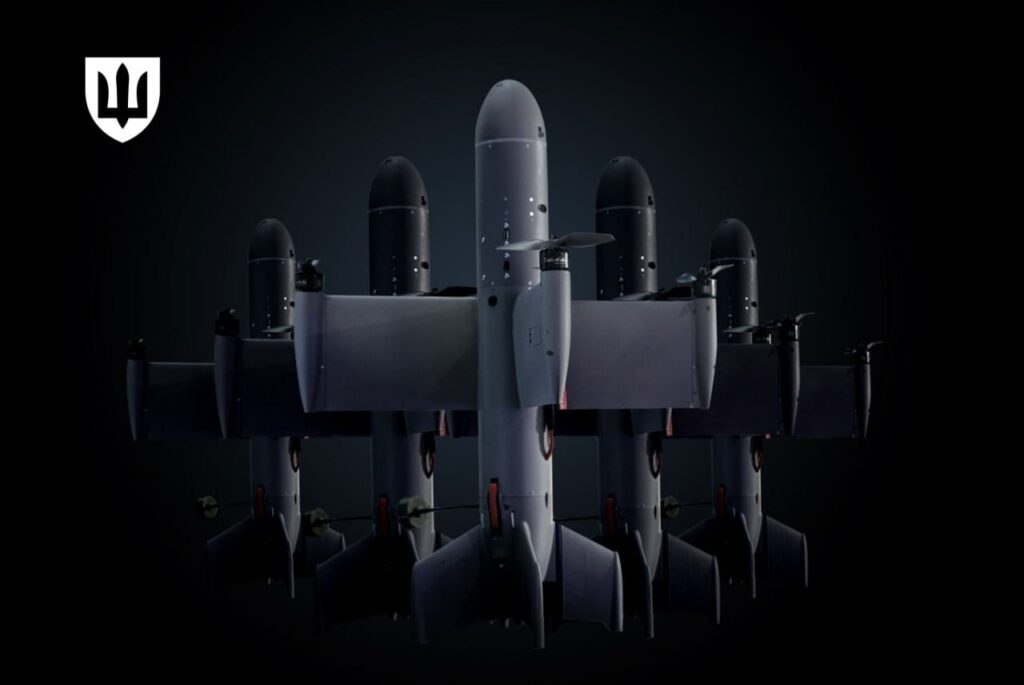

Ukraine has begun serial production of its new Octopus interceptor drone designed to take down Russia’s Shahed-type attack UAVs, Ukrainian Minister of Defense Denys Shmyhal announced on Friday. The technology has been handed to three manufacturers, with another eleven preparing production lines.
Shaheds are Iranian kamikaze drones regularly used by Russia to strike Ukrainian cities, industry, and energy facilities. They are often launched in large groups to strain air defenses and cause maximum damage. Ukraine has pushed to expand its own interception capabilities as these drones continue to hit civilian areas and critical infrastructure across the country.
Shmyhal said Octopus is a Ukrainian-developed system created by the Armed Forces and confirmed in combat. It can operate at night, under electronic jamming, and at low altitude - conditions that often make Shahed attacks difficult to counter with standard air defense assets.
He said the launch of mass production will accelerate the deployment of interceptors “so they can begin protecting Ukraine’s skies as soon as possible.”
He added that the Defense Ministry is continuing to cooperate with domestic drone manufacturers to move new designs quickly from innovation to regular frontline use.


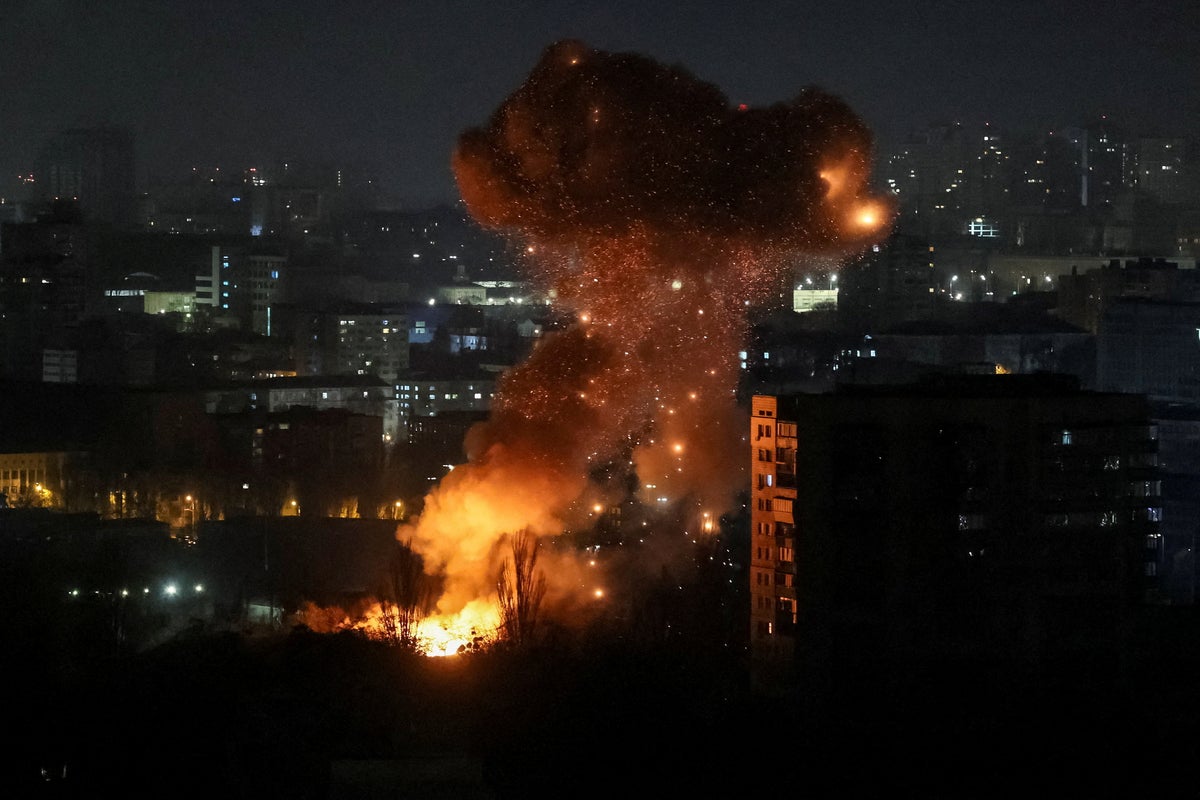
Russia is investing heavily in long-range drones as the nation bombards Ukraine

© ReutersREUTERS/Gleb Garanich


Eight Baltic and Nordic countries announced a joint $500 million weapons and munitions military aid package for Ukraine on 13 November.
The package is designed to strengthen Ukraine’s defence capabilities ahead of winter, as Russia intensifies strikes on civilian and energy infrastructure. It will supply critical weapons and ammunition sourced from the United States through NATO’s Prioritised Ukraine Requirements List (PURL) initiative.
The countries involved - Denmark, Estonia, Finland, Iceland, Latvia, Lithuania, Norway, and Sweden - confirmed the package during the Nordic-Baltic Eight (NB8) Defence Ministers’ meeting in Helsinki.
In a joint statement, they reaffirmed their commitment to Ukraine’s security, calling it “fundamental to European security” and emphasizing the need for long-term, coordinated military support.
The statement said the package is one of many ways the NB8 supports Ukraine’s ability to deter future Russian aggression. “We will not allow [Russia’s war of aggression] to succeed. Ukraine’s security is directly connected to ours,” the ministers said.
Finland, Denmark, Estonia, Iceland, Latvia, Lithuania, Norway and Sweden announced today that they will fund a USD 500 million package of defence materiel for Ukraine sourced from the United States.
— Puolustusministeriö (@DefenceFinland) November 13, 2025
Press release: https://t.co/84hkJTowV4 pic.twitter.com/a13IdUfK9z
The Prioritised Ukraine Requirements List (PURL) allows NATO allies to pool funds to purchase US-supplied weapons, munitions, and military equipment for Ukraine.
NATO Secretary General Mark Rutte welcomed the announcement: “This equipment is extremely important as Ukraine enters the winter months, and deliveries through PURL are flowing into Ukraine. NATO Allies will continue to deliver essential equipment and supplies.”
The aid package will provide high-priority military equipment such as missiles, precision weapons, air defence systems, long-range artillery shells, HIMARS rockets, and guided aerial bombs.
Norway’s Defence Minister Tore O. Sandvik noted that PURL ensures Ukraine receives urgent equipment quickly, and Sweden highlighted the package’s contribution to strengthening Ukraine’s air-defence capabilities.
Norway is contributing the largest share at roughly NOK 2 billion (~$200 million), Sweden $60 million, Denmark around 400 million Danish kroner (~$53 million), and Lithuania $30 million.
Lithuania also earmarked funds for next year and stressed the importance of using frozen Russian assets to support Ukraine’s defence spending.
The NB8 meeting also addressed broader initiatives, including training Ukrainian brigades in collaboration with Baltic, Nordic, and Polish forces. Lithuania will contribute €12 million worth of equipment, ammunition, grenades, and a mobile training team to the OP-LEGIO Training Centre in Poland.
Ministers emphasized that Russia’s aggression poses a long-term threat to European security, the transatlantic community, and the rules-based international order.
Estonia’s Foreign Minister Margus Tsahkna said maintaining support for Ukraine will remain central to the NB8’s agenda during Estonia’s presidency next year.
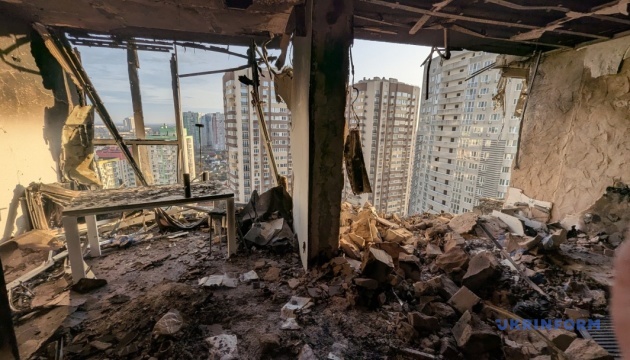

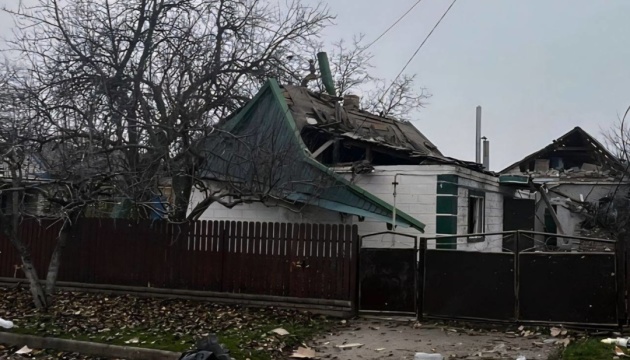



Kyiv residents endure 12-16 hour blackouts this winter—but the darkness was avoidable. Ukraine had proven grid protection works: under former Ukrenergo chief Volodymyr Kudrytskyi, 60 concrete shelters defended critical transformers, and nearly all survived repeated Russian strikes. But this success was not replicated across Ukraine's energy sector.
On 10 November 2025, Ukraine's National Anti-Corruption Bureau exposed systematic corruption at state nuclear operator Energoatom—1,000 hours of surveillance recordings documenting officials organizing 10-15% kickbacks while zero protective shelters were built at their facilities through autumn 2024.
Simultaneously, Kudrytskyi—who had secured €1.5 billion in Western aid for grid defense—faced fraud charges over a 2018 fence project where the state lost nothing.
The political prosecution triggered a predictable response: Western donors withdrew, international funding collapsed to 5-10% of previous levels, and critical infrastructure went unprotected.
The convergence proved catastrophic. At Ukrenergo's protected sites, transformers survived Russian attacks. At Energoatom's unprotected substations and thermal plants, missiles found easy targets.
Current blackouts stem from this dual institutional failure: corruption preventing infrastructure protection, political vendetta destroying donor confidence. Ukraine built the solution, proved it worked, then officials chose kickbacks over replication—and prosecuted the executive who delivered results.

The combined effect of corruption and political persecution deepened Ukraine's energy crisis by shutting down the main channel of Western financial support. International aid through Ukrenergo dropped to just 5-10% of previous levels after Kudrytskyi's September 2024 dismissal—from €1.5 billion over 18 months to a trickle.
Meanwhile, zero protective shelters were built for transformers at Energoatom, thermal power plants, and regional energy companies until autumn 2024, despite Ukrenergo completing approximately 60 such structures at its own facilities by September.
Oleksandr Kharchenko, director of the Energy Industry Research Center, told Suspilne that this loss of international backing is directly responsible for the severity of current blackouts—a consequence of institutional breakdown rather than Russian missiles alone.

The protection systems built at Ukrenergo, Ukraine's national electricity transmission system operator, and Energoatom, Ukraine’s nuclear operator, tell a tale of two radically different management systems.
Under Kudrytskyi's leadership, Ukrenergo partnered with the government's Agency for Restoration and Development of Infrastructure to construct approximately 60 anti-drone shelters for critical transformers by September 2024. These massive concrete structures—up to 25 meters tall—were designed specifically to withstand mass Iranian Shahed drone strikes.
The effectiveness proved remarkable. According to the Verkhovna Rada's temporary investigative commission cited by Kharchenko, out of 74 protected objects built by Ukrenergo and the Agency, only one autotransformer was destroyed by a direct hit from a heavy missile. The rest survived repeated attacks.
Kudrytskyi explained to Espreso that Ukrenergo secured several billion euros in aid—significantly more than Ukraine's entire Energy Ministry obtained. Western partners trusted the company's management and saw results. Between 2020 and 2024, Ukrenergo attracted $1.5 billion in grants and loans, becoming the second-largest recipient of international aid in Ukraine after the state itself.
But outside Ukrenergo's network, the picture was bleak. At the time of Kudrytskyi's dismissal in September 2024, zero protective shelters had been built for transformers at non-Ukrenergo sites—including Energoatom facilities, thermal power plants, and regional energy companies, according to Kudrytskyi in his interview with the BBC.
Kharchenko confirmed that Energoatom didn't even begin tendering for protective construction until late summer or early autumn 2024. The unprotected Energoatom substations and open switchgears became priority targets, he explained, and current blackouts stem directly from this failure to protect key generation facilities.
The delayed protection had a simple reason, Kharchenko suggested: some officials questioned whether such expensive fortifications were necessary at all.
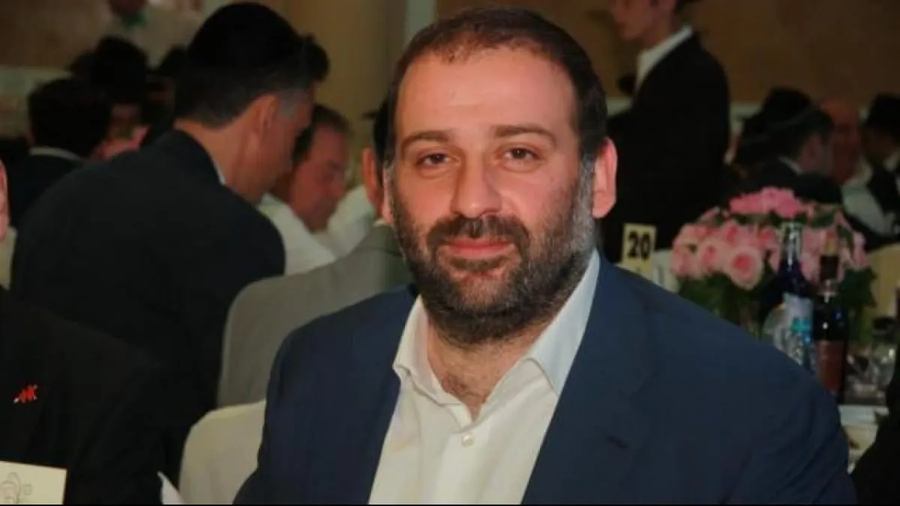
On 10 November 2025, Ukraine's National Anti-Corruption Bureau unveiled Operation Midas—a 15-month investigation documenting systematic corruption at Energoatom. Over 1,000 hours of surveillance recordings captured contractors openly discussing "Shlagbaum" (bar gate)—slang for the 10-15% kickbacks demanded from anyone wanting to work with the nuclear operator.
The scheme operated from a Kyiv office tied to Andrii Derkach, a former Ukrainian MP whom the US Treasury sanctioned in 2020 as "an active Russian agent" for election interference, and who now serves as a Russian senator.
Investigators identified businessman Tymur Mindich—President Volodymyr Zelenskyy's former comedy studio partner—as "Carlson," coordinating the money-laundering network.
Justice Minister Herman Halushchenko, who previously served as Energy Minister, appeared in recordings under the codename "Professor."
Mindich crossed Ukraine's border at 02:09 on 10 November—hours before NABU detectives arrived at his residence, raising immediate questions about information leaks. He's now believed to be hiding in Israel or Austria.
When asked about the $100 million NABU alleges was stolen through the Energoatom kickback scheme, Kharchenko was skeptical: "100 million—this is, well, maybe, 10%." The implication: the full corruption scale could reach $1 billion.

Between 2020 and 2024, Ukrenergo chief Kudrytskyi secured $1.5 billion for Ukrenergo from Western partners—triple what Ukraine’s entire Energy Ministry obtained. He ensured shelters were built from donor funds: "We didn't spend a single budget kopeck on those shelters that Ukrenergo built," he told Espreso.
He was dismissed in September 2024—and the money flow stopped. Western partners noticed: Two Western board members—Daniel Dobbeni and Peder Andreasen—quit Ukrenergo, calling the firing "politically motivated."
The dismissal triggered a financial crisis. While talking to Suspilne, Kharchenko explained that Ukrenergo failed to restructure its Eurobonds in coordination with Ukraine's sovereign debt restructuring, pushing the company into technical default. International lenders won't provide new credits to an entity in default, and grant-makers grew cautious.
This funding flow, built around trust for Kudrytskyi, collapsed. "When Kudrytskyi was dismissed, the main channel of Western support through Ukrenergo was effectively closed," Kharchenko explained. "We lost international support for Ukrainian energy. We've lost at least 80% of what we could have received."
The aid flow plummeted from €1.5 billion over 18 months to just 5-10% of previous capacity. Naftogaz now maintains Western trust with quality corporate governance, but can only support gas infrastructure—not the devastated electricity sector.
Kudrytskyi now faces fraud charges stemming from a 2018 fence reconstruction project. The case centers on bank guarantees that Ukrenergo properly collected when a contractor failed to complete work—a standard commercial transaction where the state suffered no losses.
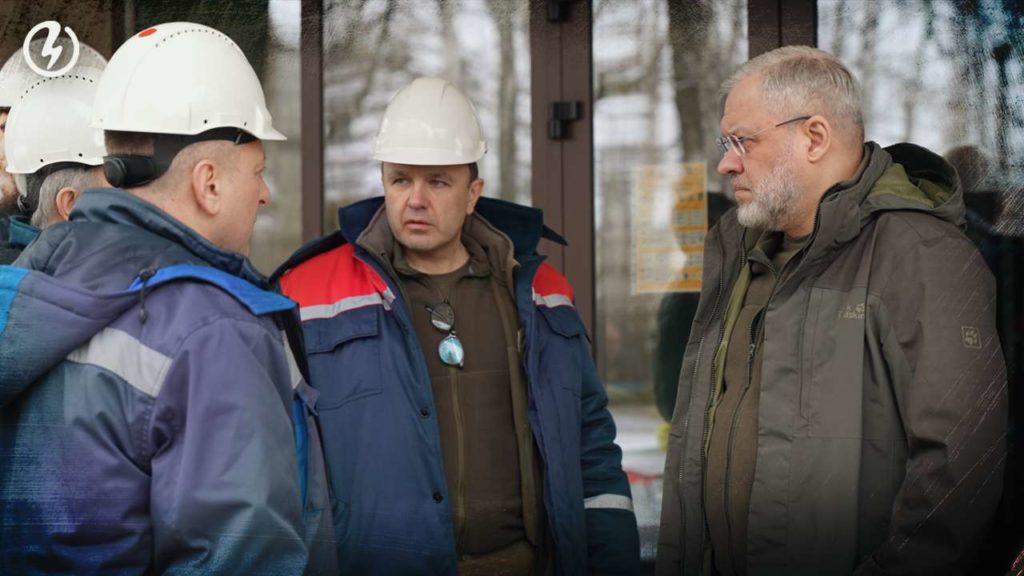
The charges materialized 14 months after his dismissal, following his public criticism of infrastructure protection failures by Energy Minister Herman Halushchenko—who was exposed in the Mindich tapes under the code name "Professor" within the criminal organization, according to information from the NABU investigation and reports from lawmakers.
For international donors—whether financial institutions or government aid agencies—trust and reputation of recipients matter fundamentally.
"When these donors see corruption scandals, or political interference in corporate governance, or political cases not backed by facts and made in half a day, this creates additional obstacles," Kudrytskyi told Espreso. "We don't have time to heroically overcome obstacles we create for ourselves."
Kudrytskyi has been accused of failing to ensure energy security, despite having left his position 14 months earlier. The disconnect puzzled observers.
Kharchenko offered an explanation. He sees that people in Zelenskyy's circle are exclusively friendly to Halushchenko—the former Energy Minister now serving as Justice Minister. "Herman Valeriyovych knows how to communicate with people—I assure you, in person he's very pleasant, charismatic, professional, and convincing," Kharchenko said. Most people surrounding the president evidently receive information through one channel.
"I don't see the president, in the energy sphere, inviting people who broadcast any alternative thoughts and assessments, and listening to what's wrong," Kharchenko told Novyi Vidlik.
The monopolized information flow means alternative assessments of infrastructure failures and protection gaps never reach decision-makers. "When you have energy being attacked and negative things happening, and people around you point fingers at each other or say everything's fine, but it's evidently not fine—a manager in such a situation would invite an alternative viewpoint," Kharchenko said. "I don't observe this situation."

Kharchenko predicted a predictable winter pattern: major Russian attack, followed by three to four days of severe disruption with 12-16-hour blackouts, then a gradual recovery until the next strike.
Three cities face the worst schedules: Kyiv, Odesa, and Kharkiv—massive consumption centers with insufficient internal generation. Kyiv and Odesa each face roughly one gigawatt power deficits. These cities will consistently endure the longest outages.
"I'm not an adherent of winter armageddon," Kudrytskyi told Espreso. "I don't think the energy system will collapse or there will be catastrophic consequences. We'll still survive the next winter. But of course, the question is the duration of outages and the degree of damage Russians can achieve to our facilities."
The strategic solution, both Kudrytskyi and Kharchenko emphasized, is accelerating distributed generation: replacing 15-20 large Soviet-era power plants vulnerable to missile strikes with hundreds of small gas, solar, and battery storage facilities scattered across Ukraine. Such a network would be exponentially harder for Russia to destroy and provide crucial regional resilience.
But distributed generation requires coordination, funding, and institutional trust—precisely what corruption and political persecution have destroyed.
The failure wasn't technical or financial. In summer 2023, authorities identified several hundred critical infrastructure objects requiring protection—not just Ukrenergo substations, but power plants, gas infrastructure, and other essential facilities.
From summer 2023, Ukrenergo and the restoration agency built protection for Ukrenergo substations. But what happened at other facilities?
In his Espreso interview, Kudrytskyi posed the critical questions:
The answer emerged in November 2025 surveillance recordings: some officials were too busy organizing kickback schemes to focus on infrastructure protection.
Anti-corruption lawyer Daria Kaleniuk wrote that persecution of government critics through fabricated criminal cases had become a trend. Western board members Daniel Dobbeni and Peder Andreasen quit Ukrenergo in September 2024, calling Kudrytskyi's dismissal "politically motivated."
Now Ukrainians endure 12-16 hour blackouts at the heart of this energy crisis—not because Russia attacks, though it does, but because institutions failed to build protection systems, maintain donor trust, or prioritize infrastructure over personal enrichment.
"Any effective action against corruption is very much needed," Zelenskyy said after the NABU raids. But the damage was done. The coordination failure between protection, prosecution, and politics left Ukraine's grid more vulnerable than Russian missiles alone could have achieved.
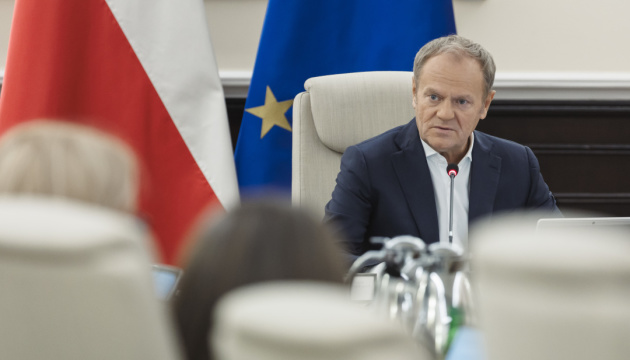







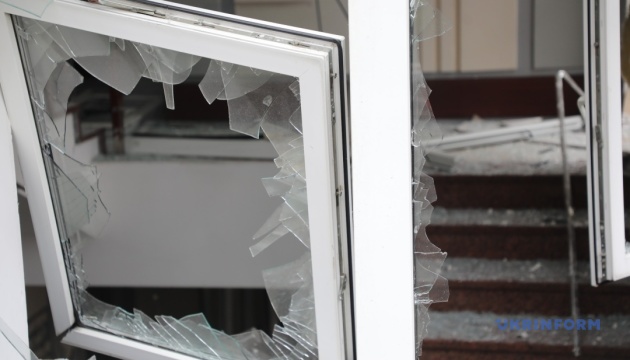



© Copyright 2025 The Associated Press. All rights reserved




Ukrainian military intelligence (HUR) released a video showing what it says was a sabotage operation that disrupted freight traffic on the Trans-Siberian Railway in Russia’s Khabarovsk Krai.
The Trans-Siberian line moves military cargo across Russia, including weapons from abroad. HUR has carried out similar operations against rail lines, depots, and supply routes in recent months, aiming to slow Russian logistics far from the front.
According to HUR, an explosion hit the line near the village of Sosnovka, about 6,600km from Ukraine, on 13 November, halting cargo movement along a route used for transporting weapons and ammunition, including supplies from North Korea.
HUR said the blast derailed a freight train and damaged the track. The agency described the operation as part of broader efforts to target Russian logistics.
The published video shows the placement of an explosive charge along the rail line and the controlled detonation.

HUR added that Russian security services failed to protect one of the country’s critical transport corridors and said such actions would continue.
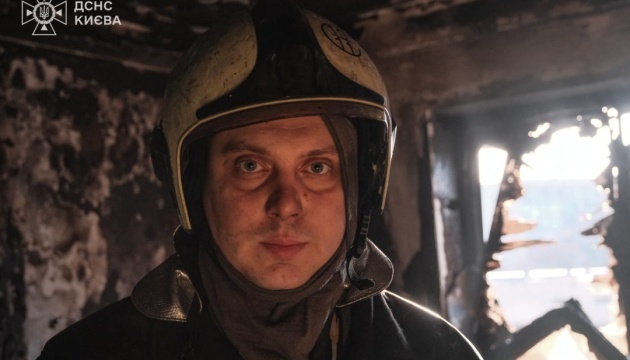



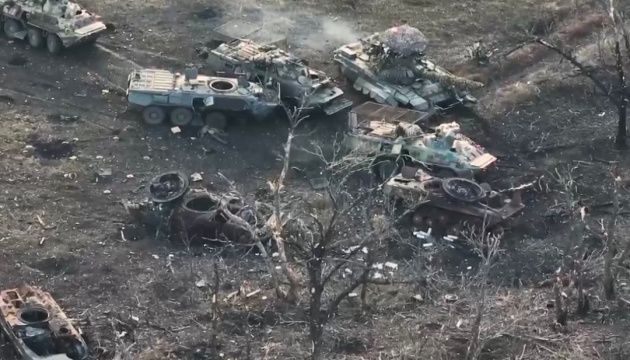


Russia has amplified its attacks on Ukraine despite insistence it is open to peace talks

© Reuters
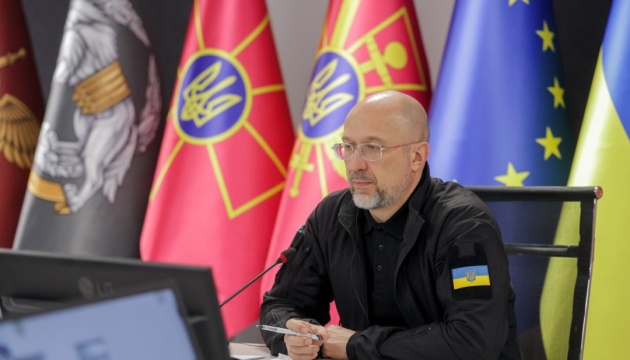



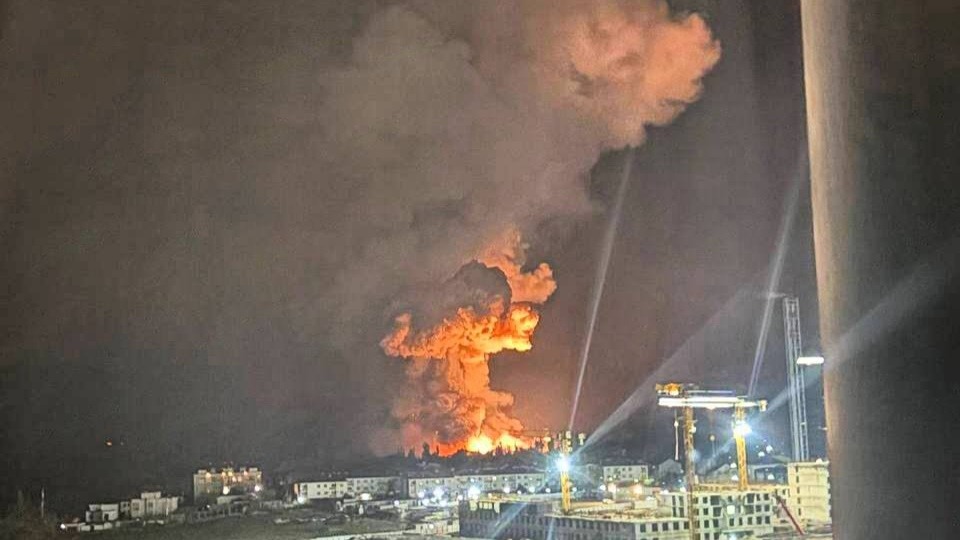

Explosions were recorded in Novorossiysk overnight on 14 November as Ukrainian forces conducted a combined missile and drone strike on the Russian Black Sea port city, 300-400 km from the southern sections of the frontline in Ukraine. Fires were observed at an oil terminal and military installations, with video footage, satellite imagery, and local reports confirming multiple impact sites across the area.
The attack began around midnight, with explosions reported in various districts of Novorossiysk in southern Russia's Krasnodar Krai.
Ukrainian Telegram channel Exilenova+ published multiple videos and images from the scene. In one of the videos, a woman is heard descibing an explosion she saw before starting to film the video and then reacting to a new sudden blast: “It lit up just like this.”
Eyewitness footage showed significant fires and rising smoke in multiple locations.
The site, a strategic end-point for Transneft’s pipeline network, lies 300–400 km from the frontline and plays a key role in Russia’s Black Sea oil exports.
— Euromaidan Press (@EuromaidanPress) November 13, 2025Exilenova+ pic.twitter.com/XFq2OmwYOH
Several videos captured Russian air defense launches, including one missile falling into the sea and another—or the same recorded from the opposite angle—illuminating the horizon.
Posting two clips of a particularly large explosion, Exilenova+ first stated that the strike hit military unit 52522, likely at an ammunition depot, and identified the point of view's coordinates as 44.6714567471, 37.7787317922. An updated post said a suspected S-400 air defense system position was located behind a “Lenta” mall, seen in the clips. Open-source researchers from the Cyberboroshno community stated that S-300 or S-400 positions belonging to military unit 1537 of the Kuban anti-aircraft missile regiment were hit.
Not just the oil terminal: Another strike on Novorossiysk captured from two angles
— Euromaidan Press (@EuromaidanPress) November 13, 2025
Exilenova+ believes it hit the military unit 52522, possibly an ammunition depot.Exilenova+ https://t.co/48xX2tePCz pic.twitter.com/7AW9xD6U5t
Videos showed that during the air assault, fires broke out at Transneft's Chernomortransneft oil terminal in the Sheskharis area of Novorossiysk following the aerial attack. The site is a key point in the Transneft pipeline network. NASA’s FIRMS satellite system also recorded numerous fire outbreaks in the Novorossiysk area.
Reuters cited two unnamed industry sources who said that Transneft's oil exports from Novorossiysk were suspended after the attack.
Due to the overnight attack, the airports in Krasnodar and Gelendzhik temporarily suspended operations.
On 14 November, President Volodymyr Zelenskyy published a video showing a modified launcher for the “Long Neptune” cruise missile.
Ukraine launched its Long Neptune missiles at targets in Russia, Zelenskyy said
— Euromaidan Press (@EuromaidanPress) November 14, 2025
He didn't specify the exact targets, but last night's footage of a powerful explosion suggests that at least one Neptune has struck Russia's Novorosiysk.TG/Zelenskyy https://t.co/j6P01SKzNM pic.twitter.com/d3K4KZPJA6
Militarnyi notes that the system is mounted on a Tatra chassis and fitted with square transport-launch containers designed for two longer missiles. Zelenskyy said that Ukrainian forces used the Long Neptunes successfully overnight against designated targets in Russian territory.
The Ukrainian strikes came amid Russia's massive air and drone attack on Kyiv. Zelenskyy called the Ukrainian strike a “just response to continued Russian terror” and stated that Ukrainian missiles demonstrate growing accuracy and effectiveness each month.
Russia’s Ministry of Defense claimed that its air defense forces shot down 66 Ukrainian drones over Krasnodar Krai during the night.
The emergency task force of Krasnodar Krai acknowledged damage to the oil depot at the Sheskharis transshipment complex and a "civilian" ship in the port — possibly an oil tanker of Russia's "shadow fleet," used to circumvent G7's oil sanctions.
It also claimed that drone debris have fallen in several areas of the city.


Ukrainian forces launched a large drone strike on Russian positions in occupied Donetsk on Thursday evening, according to local Telegram channels.
Donetsk in eastern Ukraine has been under Russian occupation since 2014. The city hosts major industrial sites and remains one of the main rear areas supporting Russian forces in the east.
Residents reported the sound of dozens of drones around 8pm, followed by intense Russian anti-aircraft fire across several districts.
Videos show gun and machine-gun fire directed at low-flying targets, which Ukrainian defense portal Militarnyi says suggests earlier strikes may have disabled some Russian missile and radar systems.
Donetsk-based sources report a drone attack on the occupied city.
— Euromaidan Press (@EuromaidanPress) November 13, 2025
Footage from the scene includes the sound of drone engines, Russian anti-aircraft fire, an apparent strike, and what may be a fire at the Donetsk Metallurgical Plant. The full outcome of the attack remains… pic.twitter.com/94CksVPsDt
Footage from the scene captures the sound of drone engines, bursts of anti-aircraft fire, and at least one blast. A major fire was later visible at the Donetsk Metallurgical Plant, with several thick columns of smoke rising from the area.
Parts of the city lost power during the attack, pointing to possible damage to energy infrastructure. Witnesses said the drones arrived in waves and circled over the city for an extended period.
Militarnyi reports, based on the released clips, that the strike appears to have involved FP-2 kamikaze drones produced in Ukraine.






Today, there is important news from the Pokrovsk direction.
Here, Ukrainian units launched a massive wave of coordinated counterattacks along the entire Dobropillia frontline to block and cut off the Russian pincer above Myrnohrad. As the Russians were forced to quickly react to the unfolding developments, the Ukrainian command ordered to execute the most important move of the entire Pokrovsk operation.

Ukrainian units counterattacked near Dobropillia, combining airpower, tanks, and precision-guided munitions in a synchronized strike that put Russian positions in great danger.
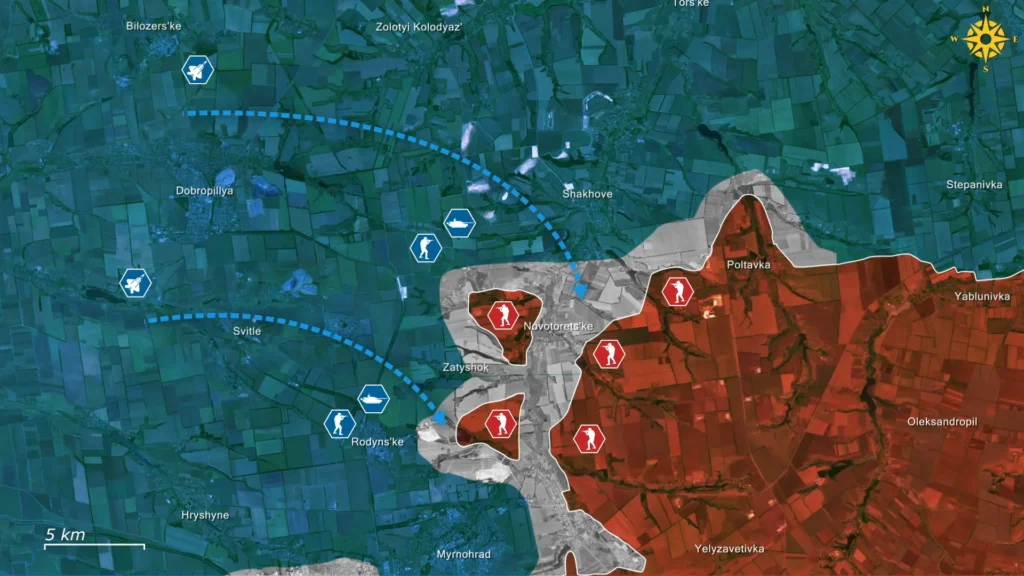
The operation began when aerial reconnaissance detected Russian drone operators setting up in the territory of a local mine east of Rodynske. Within minutes, the coordinates were transmitted, and a Ukrainian Su-27 delivered a precise strike with a GBU-62 Jdam bomb, annihilating the launch site.
Moments later, Ukrainian surveillance drones spotted Russian troops attempting to fortify a building on the outskirts of Rodynske. Another airstrike followed, again using Jdam bomb, wiping out the infiltrators and several Russian officers who had been directing operations in that area.

Later, Ukrainian drones identified fresh groups of Russian soldiers attempting to regroup in another building inside Rodynske, but a Ukrainian tank opened fire on one structure, clearing it of enemy forces. Inside an industrial complex nearby, more Russians were spotted, so Ukrainian jets launched Jdam's again, with the first one missing slightly due to Russian electronic warfare interference, while the second flattened the site successfully.
These air strikes were part of a carefully planned prelude to the main ground counterattack aimed at securing Myrnohrad's northern flank and pushing Russian forces further away from encircling it.
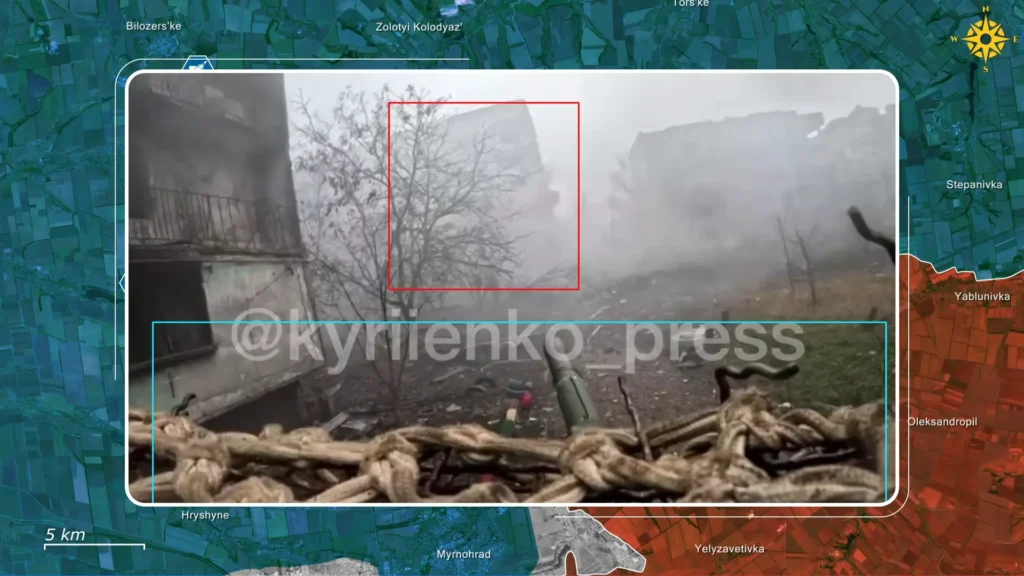

Ukrainian forces used the momentum of the air strikes and ground units to simulate a massive assault launched from all sides, catching the attention of the Russian surveillance and forcing them to switch focus from offense to defense. The enemy abandoned temporarily attempts to reach the encircled units and instead focused on holding the line.
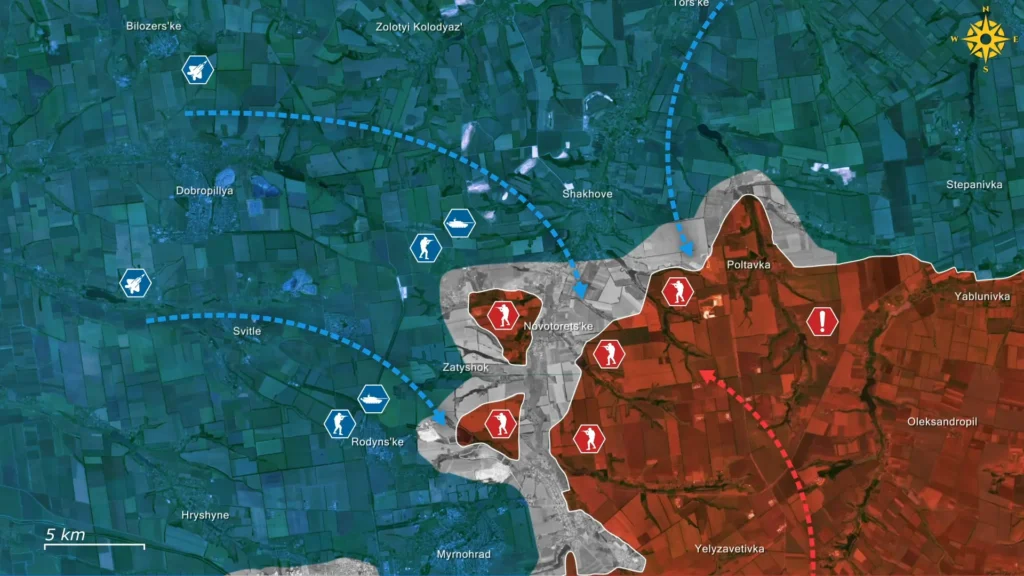
Later, it became evident that the Ukrainian counterattack was a well-orchestrated distraction. While the Russian command concentrated all attention on Dobropillia, convinced that the northern flank was the main target, Ukrainian commanders quietly executed a partial rotation of forces in Myrnohrad.
This operation enabled the secure evacuation of wounded personnel and the delivery of vital supplies and ammunition to those still defending the town. It was a textbook deception maneuver: create pressure on one sector, force the enemy to divert reserves, and use the gained window to reinforce or extract troops from another direction.

This first stage of the plan was completed with remarkable coordination. Ukrainian troops conducted the rotation and partial withdrawal from the semi-encircled town with no losses.
The counterattack to the north drew away Russian reconnaissance assets, allowing evacuation convoys to move through safely under electronic countermeasures. Part of the soldiers were safely extracted behind the frontlines, while the remaining defenders in Myrnohrad resupplied and prepared to hold the new line.
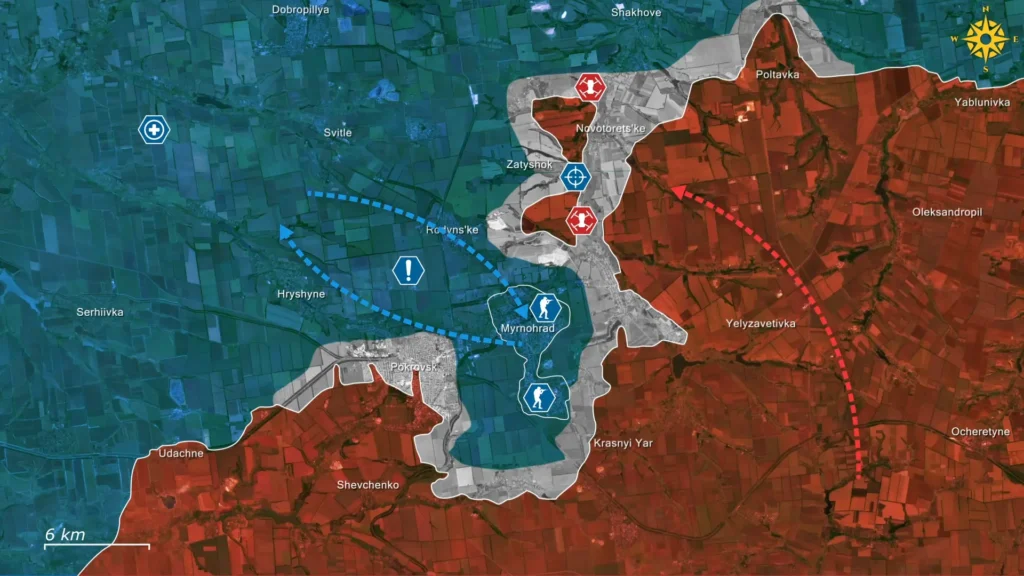
At the same time, this was not the only distraction for the Russians. While the Dobropillia counterattack tied down their reserves, they were also forced to maintain focus on Pokrovsk, where Ukrainian forces continue to hold the enemy south of the railway line by constant clearing operations against Russian infiltrators.
This persistent defense, the main objective of Ukraine's Pokrovsk operation, is working precisely as General Syrskyi planned. The ability to withdraw, rotate and evacuate forces from Myrnohrad would have been impossible if Pokrovsk had fallen or if Russian units had broken through north of the railway.
Ukrainian troops are thus not only defending two towns but coordinating between them in a way that keeps both strategically viable and linked through controlled logistics corridors.

Overall, the latest events around Dobropillia, Pokrovsk, and Myrnohrad reveal a multi-layered Ukrainian strategy to contain the Russian advance, transform Myrnohrad into a fortress, and force Russia into another slow, attritional fight that costs thousands of lives for minimal territorial gain.
The successful Dobropillia counterattack has already bought Ukraine precious time, destabilized Russian planning, and improved the security of the northern approaches.
If Ukraine continues to hold the railway in Pokrovsk and keeps Myrnohrad supplied, the Russians will face months of bloody stalemate, one that Ukraine will use to strengthen its new defensive lines behind the embattled towns.
In our regular frontline report, we pair up with the military blogger Reporting from Ukraine to keep you informed about what is happening on the battlefield in the Russo-Ukrainian war.
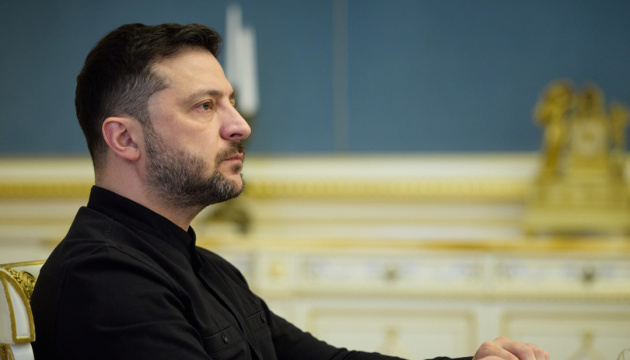





Russian forces continue to advance near Huliaipole and Velykomykhailivka, in the area where three regions—Zaporizhzhia, Donetsk, and Dnipropetrovsk—meet. According to the Institute for the Study of War (ISW), they are taking advantage of poor weather and months of targeted airstrikes to weaken Ukrainian defenses and limit drone surveillance.
ISW reported on 13 November that Russian troops continued to press toward Huliaipole in Zaporizhzhia Oblast and along the T‑0401 Pokrovske–Huliaipole highway — a vital supply route for Ukrainian forces. Russian units reached positions near Solodke, Yablukove, and Vesele, located within a nine-kilometer range of the town. Additional infiltration operations were also reported further north toward Danylivka, along the same highway.
According to ISW, the Russian military is likely avoiding a southern encirclement attempt, where Ukrainian defenses remain strongest.
Geolocated video published on 13 November showed Russian servicemembers raising flags in Danylivka, southwest of Velykomykhailivka. ISW assessed this to be the result of an infiltration mission, likely routed through Tsehelne and Yehorivka — two villages just east of Danylivka.

Russian sources claimed the seizure of both Rivnopillya, located northeast of Huliaipole, and Danylivka, with the latter reportedly taken by the Russian 5th Tank Brigade (36th CAA). Ukraine’s Southern Operational Command confirmed on 12 November that Ukrainian troops had withdrawn from Rivnopillya the evening before. On 13 November, Ukrainian Commander-in-Chief General Oleksandr Syrskyi said Russian forces were operating near Solodke, Yablukove, and Vesele — confirming continued Russian advances across multiple villages northeast and east of Huliaipole.
Ukrainian military observer Kostyantyn Mashovets reported on 13 November that elements of the Russian 37th Motorized Rifle Brigade reached the Novooleksandrivka–Oleksiivka line, southwest of Velykomykhailivka. The unit reportedly gained a foothold east of Yehorivka and achieved “tactical successes” in the Yehorivka–Danylivka direction over the past two weeks. Mashovets also noted that Russian forces crossed the Yanchur River near Uspenivka, northeast of Huliaipole, and advanced westward to the Solodke–Rivnopillya line — a seven-kilometer movement.
According to Mashovets, Russian command has concentrated forces from up to nine brigades and regiments — including one tank brigade — along a 41-kilometer front. Up to six additional regiment- and battalion-sized units were also identified. Among the reinforcements are elements of the Russian 69th Covering Brigade and 38th Motorized Rifle Brigade (both from the 35th CAA), likely now operating east and northeast of Huliaipole alongside the 5th CAA’s 127th Motorized Rifle Division.
He also assessed that Russian leadership may transfer units from the 58th Combined Arms Army (Southern Military District) and elements of the 98th Airborne Division and 41st CAA (both under the Central Grouping of Forces) to reinforce operations around Huliaipole and Velykomykhailivka.
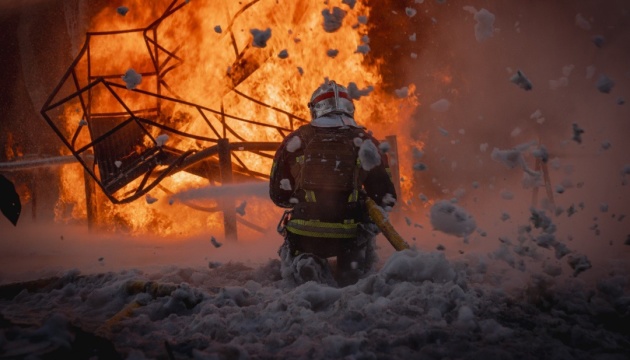

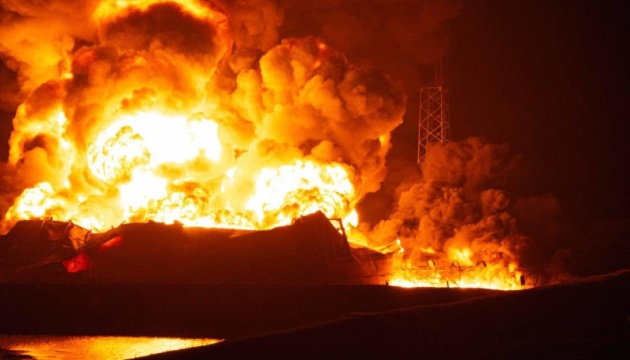



Russia launched a large-scale overnight missile and drone attack on Ukraine on 14 November, killing at least five civilians in Kyiv and two in Chornomorsk, and injuring about 50 people across multiple regions, according to Ukrainian local and national authorities. Residential buildings, civilian infrastructure, and utility networks were damaged in Kyiv city, as well as in Kyiv Oblast, and several other regions including Odesa, Sumy, Kharkiv, and Kirovohrad.
Ukraine's Air Force says Kyiv was the primary target, with Kyiv Oblast, Kharkiv Oblast, Odesa Oblast, Poltava Oblast, and Cherkasy Oblast also affected.
Update: According to Kyiv Mayor Klitschko’s latest update at 19:44, the Russian nighttime attack killed six Kyiv residents and injured 36 people, with six of them in hospitals and five in serious condition.
Russian drones and missiles struck nine districts of Kyiv during the overnight assault, according to reports from Kyiv Mayor Vitali Klitschko and the Kyiv City Military Administration (KMVA).
All five fatalities occurred in Desnianskyi district, where rescue operations continued throughout the morning. Among the 35 wounded were a 10-year-old child and a 7-year-old with facial injuries, and a pregnant woman who required hospitalization. One man remained in critical condition as of the morning.
who required hospitalization. One man remained in critical condition as of the morning.
The attack damaged dozens of residential buildings across Kyiv's Dniprovskyi, Darnytskyi, Desnianskyi, Podilskyi, Shevchenkivskyi, Solomyanskyi, Holosiivskyi, Sviatoshynskyi, and Obolonsky districts. In Dniprovskyi district, debris hit a five-story building, causing destruction on lower floors and fires in two apartments. Rescue workers evacuated nine people from that building. The district saw three multi-apartment buildings and one private residence damaged, with five people wounded.
A Russian strike on 14 October destroyed 10-year-old Viacheslav’s building in Kyiv.
— Euromaidan Press (@EuromaidanPress) November 14, 2025
“Our neighbors died & we couldn’t find our cat,” he says.
A nighttime drone blast blew out windows & set the upper floors on fire. Death toll rises to 6.
Photo: UNICEF Ukraine pic.twitter.com/6t1lx5IhoS
Podilskyi district suffered damage to five residential buildings and one non-residential structure, with fires reported on the 10th and 12th floors of different buildings. In Obolonskyi district, fires broke out on the seventh and ninth floors of one residential building. Desnianskyi district saw direct hits and fires in two multi-story buildings, where rescue teams worked through the morning clearing rubble.
A Kyiv woman from Dniprovskyi district described her experience to Suspilne:
"I heard nothing, I started putting out my hair. My hair caught fire, and then I saw that everything was dark, in smoke."
Russia damaged sections of Kyiv's heating networks during the attack, according to Klitschko. Parts of Desnianskyi district lost heating due to an emergency situation on heat transmission lines. Portions of Podilskyi district also experienced heating disruptions. Municipal services worked to determine the extent of damage and began immediate repairs.
Klitschko warned residents of possible electricity and water supply interruptions. Energy workers later reported they had eliminated localized emergency outages caused by the attack.
Last night, Russia launched 19 missiles and 430 drones. Most targeted Kyiv, where they killed at least 4, and injured 30, the authorities say.
— Euromaidan Press (@EuromaidanPress) November 14, 2025
Air defenders downed 14 missiles and 405 drones, Ukraine's Air Force says. 13 site were struck by "missiles and 23 strike drones",… pic.twitter.com/KO0Z3wX9kW
Debris from an Iskander missile damaged Azerbaijan's embassy in Kyiv, Ukrainian President Volodymyr Zelenskyy reported.
Roughly 80 drones have encircled Kyiv and are closing in
— Euromaidan Press (@EuromaidanPress) November 14, 2025
Power has gone out in districts following earlier ballistic and cruise missile attacksinsider tg pic.twitter.com/20VE19iRtG
Kyiv Oblast authorities reported no fatalities, but seven people were injured. Regional administration head Mykola Kalashnyk mentioned six injuries, while Irpin Mayor Oleksandr Markushyn reported that the Russian attack also injured a woman in his city.
Damage to dozens of residential and non-residential buildings was reported, but no fires were recorded in the oblast outside Kyiv city.
Russian forces struck the outskirts of Sumy at 7:05 a.m., with Zelenskyy stating that Russia used a Zircon-type missile according to preliminary data. The explosion damaged road pavement, ruptured a fire hydrant causing water leaks, and temporarily closed a road section. Artem Kobzar, acting mayor of Sumy, reported no casualties from the strike.
Russian forces also struck Sumy's industrial zone with drones around 9:00 a.m., causing a fire at a production facility. Sumy Oblast head Oleh Hryhorov noted that Russia attacked the industrial zone with drones for the second consecutive day.
Russian forces attacked a local market in Chornomorsk, Odesa Oblast, with strike drones, killing two people and wounding seven others. Some of the wounded remained in serious condition, according to Odesa Oblast head Oleh Kiper.
The strike damaged the city square, shop facades, and private vehicles. The blast wave shattered windows in a nearby college. Rescue workers and all relevant services worked at the scene.
Vice Prime Minister Oleksii Kuleba reported heating and water supply disruptions in Kyiv city and oblast, Kharkiv, Odesa, Sumy, Dnipropetrovsk, Kirovohrad, and Donetsk oblasts. Repair crews deployed and activated reserve systems where needed.
Ukrainian Air Force said air defenders shot down or suppressed 419 aerial targets out of 449 detected. Russia reportedly started the attack from 6:00 p.m. on 13 November using strike drones and missiles from air, ground, and sea platforms.
Moscow fired 430 Shahed and Gerbera long-range strike drones and 19 missiles from several location in Russia and occupied Crimea. Among the missiles used were three Kinzhal air-launched ballistic missiles from Ryazan Oblast, one Zircon anti-ship missile, six Iskander-K and Kalibr cruise missiles from occupied Crimea and the Black Sea, and nine Iskander-M and KN-23 ballistic missiles from Bryansk Oblast.
Ukraine’s Air Force stated that Russian forces launched 449 aerial threats: 430 strike UAVs and 19 missiles (ballistic and cruise).
Out of these, 419 were intercepted or suppressed:
The Air Force recorded missile and drone hits at 13 locations and debris falls at 44 locations.
President Zelenskyy emphasized the deliberate nature of the Russian attack in his morning statement.
"A deliberately calculated attack to cause as much harm as possible to people and civilian infrastructure," he wrote.
The President emphasized that Russia continues to benefit financially from oil exports by circumventing existing sanctions. He called for these evasion schemes to be effectively shut down, and urged allied nations, particularly in Europe and the United States, to provide Ukraine with additional air defense systems and interceptor missiles.
"A lot of work is being done with partners to strengthen air defense, but not enough. Strengthening with additional systems and interceptor missiles is needed. Europe and the USA can help. We count on real decisions," he added.
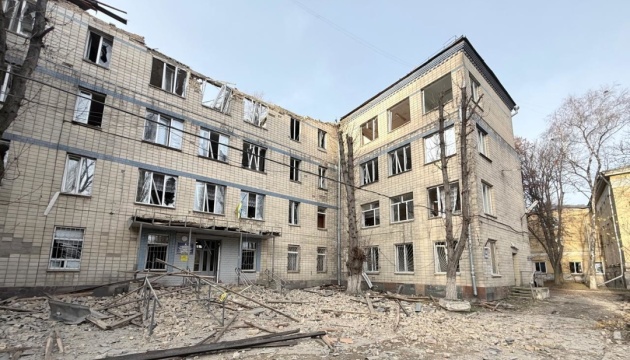

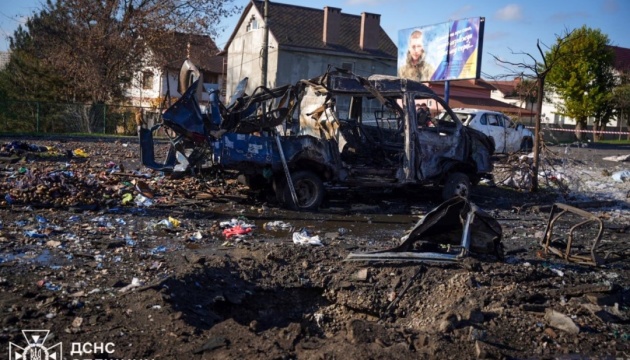


© AFP via Getty Images




